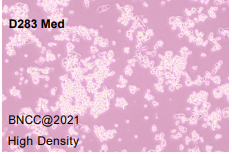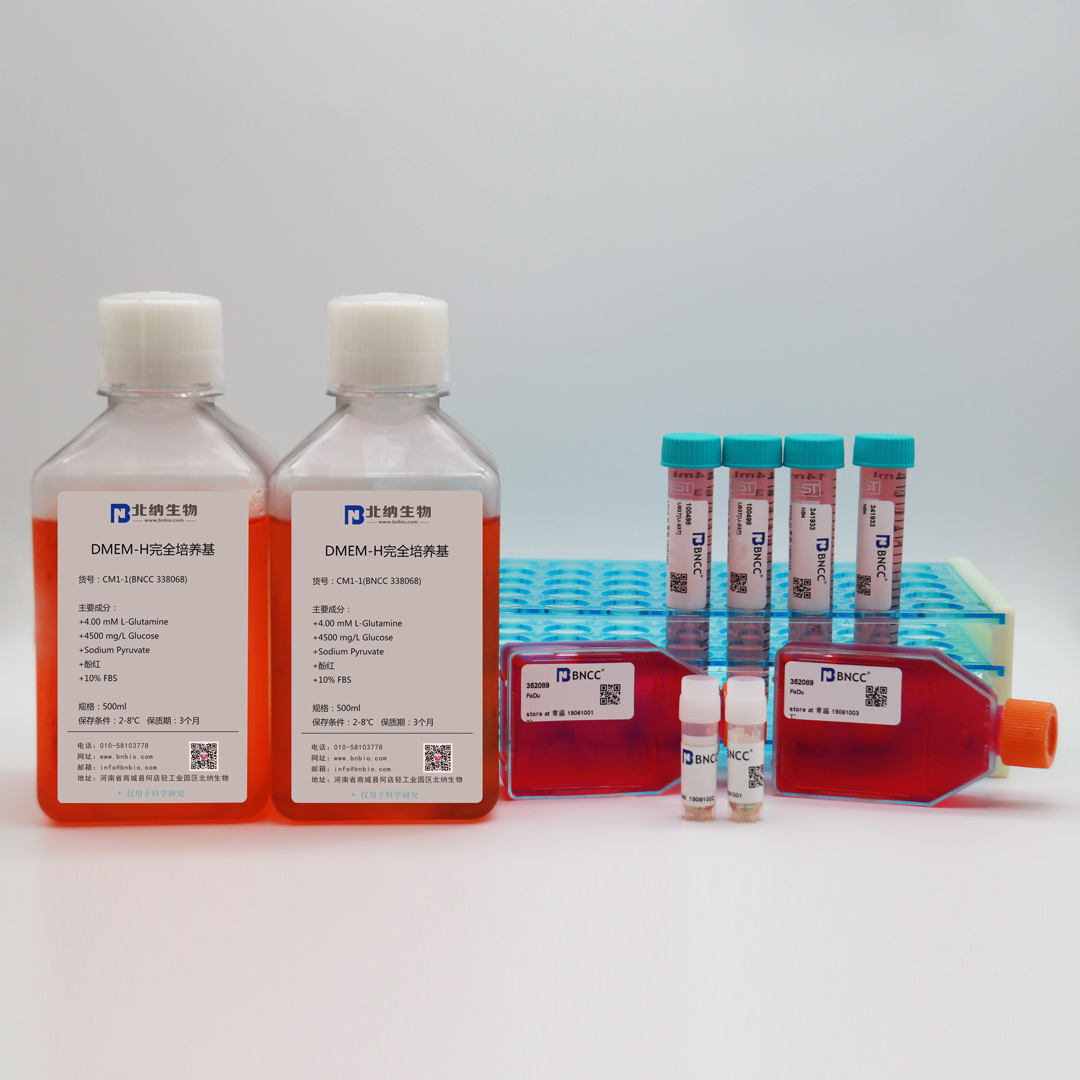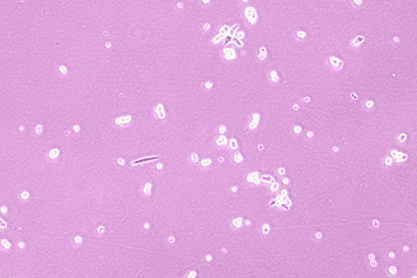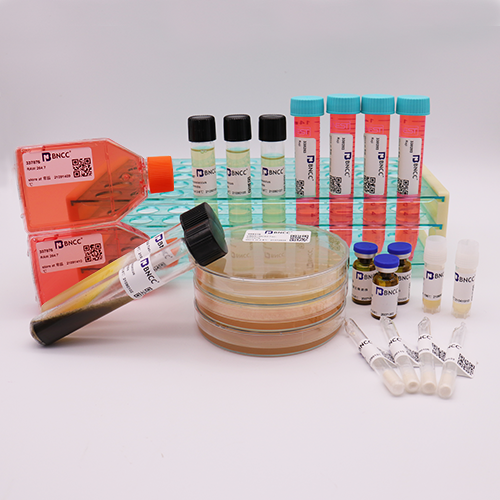D283 Med human medulloblastoma cells
BNCC number: 360109
Growth properties : Semi-adherent and semi-suspended
Growth conditions: 37 ℃,5% CO2
Complete medium: 90% DMEM/F12 + 10% FBS
Frozen storage conditions: 50% basic culture medium + 40% FBS + 10% DMSO receipt instructions: if any abnormality is found on the day of receipt, please contact customer service within 24 hours in time. if it is overdue, it will be regarded as good receipt. Frozen storage tube form, after receiving the goods, put in -80 ℃ refrigerator for storage in time, if not used for a long time, should be transferred to liquid nitrogen overnight. During resuscitation, each tube shall not be retained once used up. In the form of 15ml centrifuge tube, prepare 2 new T25 culture flasks, then mix the cells evenly and transfer them into two new T25 culture flasks, add complete culture medium to 10ml, and put them into an incubator. Please strictly follow this instruction, otherwise no reissue service will be provided if cell inactivation is caused.
Recovery steps:
① take out the frozen storage tube from liquid nitrogen or -80 ℃ and put it into PE gloves, quickly subtract into a 37 ℃ water bath pot, shake the frozen storage tube to accelerate dissolution, and it is advisable to dissolve it completely within 1 minute.
② add the dissolved cell fluid into a centrifuge tube containing 9ml of complete culture medium in an ultra-clean table, centrifuge at 1000-1200rpm/min for 3-5 minutes, discard the supernatant, and resuspend the cells with 1-2mL of complete culture medium.
③ Then add the cell suspension to T25 bottle containing 6-8mL of complete medium and put it into an incubator for culture.
Cell passage:
①The culture solution (including suspended cells) is sucked into the centrifuge tube, centrifuged for 5 minutes under 1000RPM conditions, and the cells are collected;
② after gently moistening T25 bottle with PBS for two times, add 1-2mL pancreatin (0.25% Trypsin + 0.02% EDTA); Observe the digestion situation under the microscope. when the cell edge shrinks and the adherent is loose (a straw can be used to suck up some pancreatin and gently blow somewhere in the cell layer, the cell layer can be seen to fall off with naked eyes, I .e. digestion is completed, otherwise digestion is continued), directly suck off pancreatin, and add 5-6ml of complete culture medium, gently blow the cell layer, blow the cell layer off and blow it away.
③ the cells obtained from the above two steps are mixed together, then divided into a new T25 bottle according to a ratio of 1:2, appropriate complete culture medium is added, the cell suspension is beaten evenly, and cultured in an incubator.
④ pay attention to the change of PH value and cell density of the culture medium, change the liquid regularly (2-3 times a week), and repeat one operation or freeze storage when the cell density reaches 80%-90%.
Notes:
①The cells are density-dependent, and are passaged for the first time (density reaches 80%). It is recommended to pass 1:2 (maintain cell density), and preferentially in the T25 bottle.
② if the culture bottle is sealed, put it into an incubator for cultivation after treatment, and remember to loosen the cap of the culture bottle.
Recovery record: according to the recovery requirements, the above cell lines were recovered, and the recorded results were as follows:
| Item |
quality standard |
recovery record |
| viability: |
adherence is observed in 18 hours, the cell adherence rate ≥ 80.0% in 140hours |
adherence is observed in 18 hours, the cell adherence rate ≥ 80.0% in 100hours |
| cell morphology: |
semi-adherent and semi-suspended, epithelial cell-like |
semi-adherent semi-suspended, epithelial-like, short spindle-shaped, round |
| attached figure: |
 |
 |
| Conclusion: |
good viability, and no abnormal cell morphology, qualified |

 info@bncc.com
info@bncc.com
 - English
- English
 - Japanese
- Japanese






